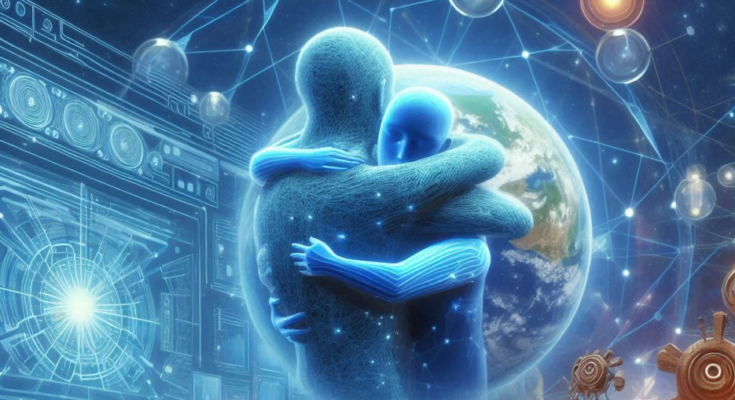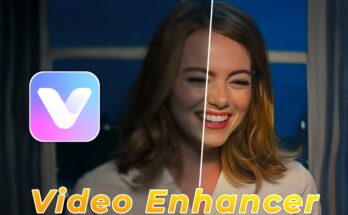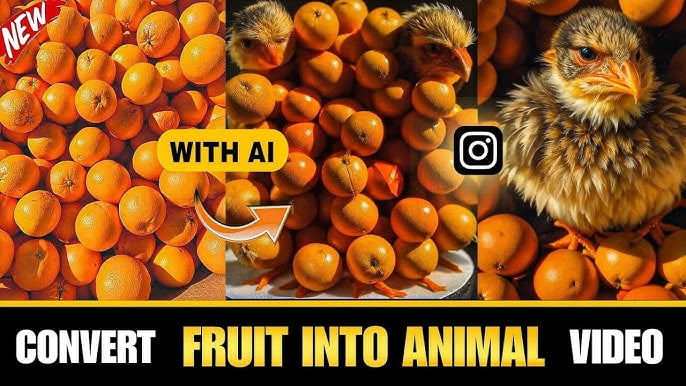As Hugging Image to Video technology advances, its integration with other emerging technologies will likely enhance its capabilities and expand its applications. Here’s a look at how it might intersect with other innovations:
- Augmented Reality (AR) and Virtual Reality (VR):
- Enhanced Experiences: Combining Hugging Image to Video with AR and VR can create immersive experiences where users interact with dynamic content generated from static images. For instance, historical photos could be animated and viewed in a virtual museum setting, providing a more engaging educational experience.
- Interactive Environments: In VR environments, users could see static objects come to life in real-time, adding a layer of interactivity and depth to virtual worlds.
- Generative Design:
- Creative Exploration: In fields like architecture and product design, Hugging Image to Video could be used alongside generative design tools to visualize how static designs evolve over time or under different conditions. This could aid in understanding design concepts and making informed decisions.
- Machine Learning and AI Collaboration:
- Synergistic Models: Future developments may see Hugging Image to Video working in tandem with other AI models, such as those focused on natural language processing (NLP) or emotion recognition. This synergy could lead to more nuanced and contextually aware video content, where AI understands and reflects the underlying emotions or narratives.
- Internet of Things (IoT):
- Dynamic Visual Feedback: Integrating Hugging Image to Video with IoT devices could provide dynamic visual feedback in smart environments. For example, smart home systems could use the technology to visually demonstrate how adjustments to settings affect different areas of the home.
The Impact on Creativity and Content Creation
Hugging Image to Video has the potential to democratize creativity and revolutionize content creation:
- Empowering Creators:
- Accessibility: By simplifying the process of creating dynamic video content from images, this technology lowers the barrier to entry for creators. Artists, designers, and hobbyists can now bring their visions to life without needing advanced technical skills or expensive software.
- Rapid Prototyping: Creators can quickly prototype visual ideas and see how static concepts evolve into dynamic content. This can accelerate the creative process and allow for more experimentation and innovation.
- New Forms of Expression:
- Interactive Art: Artists can use Hugging Image to Video to create interactive art installations where viewers engage with evolving visual narratives. This opens up new possibilities for artistic expression and audience engagement.
- Storytelling: Writers and filmmakers can explore new storytelling techniques by transforming written descriptions or storyboards into animated sequences, enhancing their ability to convey complex narratives.
The Road Ahead: Challenges and Opportunities
As with any emerging technology, the journey of Hugging Image to Video will involve navigating both challenges and opportunities:
- Ethical and Social Implications:
- Misuse: There is a potential for misuse, such as creating misleading or harmful content. Developing robust ethical guidelines and safeguards will be crucial to ensure that the technology is used responsibly.
- Cultural Sensitivity: Creating content from images may inadvertently result in cultural insensitivity or misrepresentation. It’s important to approach such applications with cultural awareness and respect.
- Technical Challenges:
- Scalability: Ensuring that Hugging Image to Video technology scales effectively for different applications and user needs will be a key challenge. This includes addressing computational demands and optimizing algorithms for various platforms.
- Quality Assurance: Maintaining high visual and contextual quality in generated videos will require ongoing advancements in AI and machine learning techniques.
- Economic Implications:
- Market Disruption: The widespread adoption of this technology may disrupt existing markets and job roles within the creative and media industries. Adapting to these changes and finding new opportunities for employment and innovation will be important.
In a world where visual storytelling is paramount, the evolution of tools that can transform static imagery into dynamic video content is nothing short of revolutionary. One such groundbreaking innovation is the concept of “Hugging Image to Video,” a transformative approach that merges the power of artificial intelligence (AI) with creative visual media. This technology not only opens new doors for content creators but also enhances how we interact with and experience visual information. Let’s dive deep into what makes Hugging Image to Video so unique and explore its potential impact on various industries.
The Birth of Hugging Image to Video
Hugging Image to Video is built upon advancements in AI, particularly in the realm of machine learning and computer vision. Traditionally, converting images into video has been a labor-intensive process requiring complex animation techniques and considerable manual input. However, recent strides in AI have streamlined this process, making it more accessible and efficient.
The term “Hugging” refers to the concept of using AI models that are “hugging” or closely integrated with large-scale visual datasets. These models have been trained on vast amounts of image and video data, enabling them to generate realistic and coherent video sequences from static images. The process involves using neural networks to predict motion and generate frames that seamlessly connect the initial image to a fully realized video sequence.
How It Works: The Technology Behind the Magic
At its core, Hugging Image to Video relies on advanced deep learning techniques. Here’s a simplified breakdown of how the technology works:
- Image Analysis: The AI model first analyzes the input image to understand its content, context, and potential motion dynamics. This involves identifying objects, scenes, and other visual elements.
- Motion Prediction: Based on the analysis, the AI predicts how these elements would move in a real-world scenario. For instance, if the image is of a car, the model predicts how the car would move and interact with its environment.
- Frame Generation: The AI then generates intermediate frames that transition smoothly from the initial image to the final video. This involves creating new visual content that matches the predicted motion and maintaining consistency across frames.
- Video Synthesis: The final step involves stitching together these frames to produce a coherent video. This video maintains the visual quality and context of the original image while adding dynamic movement and interaction.
Applications Across Industries
The potential applications of Hugging Image to Video are vast and varied. Here are some of the key areas where this technology is making waves:
- Entertainment and Media: Content creators can use Hugging Image to Video to bring static images from comic books, storyboards, or concept art to life. This can revolutionize animation, special effects, and visual storytelling by providing new tools for creative expression.
- Marketing and Advertising: Brands can leverage this technology to create engaging promotional videos from static advertisements or product images. By transforming product shots into dynamic video content, companies can capture audience attention more effectively.
- Education and Training: Educational materials can be enhanced by converting diagrams, historical photos, or instructional images into interactive videos. This makes learning more engaging and helps visualize complex concepts.
- Healthcare and Research: In medical imaging and research, Hugging Image to Video can be used to visualize changes in medical scans over time or simulate the progression of diseases. This can aid in diagnostics and patient education.
- Personal Use: On a more personal level, individuals can use this technology to animate cherished family photos or create dynamic visual content for social media. It opens up new possibilities for personal expression and creativity.
Challenges and Considerations
While Hugging Image to Video offers exciting possibilities, it also presents several challenges:
- Ethical Concerns: The ability to create realistic videos from static images raises concerns about misinformation and deepfakes. Ensuring that this technology is used responsibly is crucial.
- Quality and Accuracy: Generating high-quality, accurate video sequences from images requires sophisticated algorithms and substantial computing power. Ensuring that the generated content maintains high visual fidelity is an ongoing challenge.
- Data Privacy: Using AI models trained on large datasets necessitates careful consideration of data privacy and security, especially when dealing with sensitive or personal images.
The Future of Hugging Image to Video
As AI technology continues to evolve, the capabilities of Hugging Image to Video will undoubtedly advance. Future developments may include even more realistic video generation, better integration with other AI tools, and expanded applications across various fields. The ongoing research and innovation in this space promise to make these tools more accessible and versatile, further transforming how we create and consume visual media.
In conclusion, Hugging Image to Video represents a significant leap forward in the world of visual technology. By harnessing the power of AI to transform static images into dynamic videos, we are witnessing a new era of creative and interactive media. As this technology continues to develop, it holds the potential to reshape industries, enhance personal creativity, and redefine how we experience visual content. The journey has just begun, and the future is brimming with possibilities.
Conclusion
Hugging Image to Video stands at the forefront of a new era in visual media, where AI transforms static imagery into dynamic, interactive video content. Its potential to revolutionize industries, enhance personal creativity, and redefine visual storytelling is immense. As we continue to explore and refine this technology, it will be crucial to address the accompanying challenges and leverage the opportunities it presents.
The journey of Hugging Image to Video is just beginning, and its evolution promises to shape the future of how we create, consume, and interact with visual content. As this technology matures, it will undoubtedly open new avenues for creativity and innovation, transforming the way we experience the world through images and videos. The future is bright, and the possibilities are as vast as our imagination allows.



